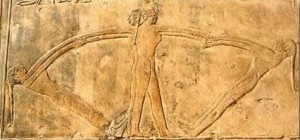People tend to think of the past in modern terms and effortlessly make the obvious correlations. Although such a practice isn’t forbidden, it lacks the underlying information needed in order to reconstruct older cultures and societies. According to theoretics, the best approach is to place each subject within its context and thus consider the whole picture. Bearing this in mind, I will try to present the experience of being a girl in ancient Egypt.
Even if we labelled the ancient Egyptian civilization avant-garde, there is a great deal of information that could endorse that viewpoint, as well as other aspects that would support a different description. Ancient Egypt is a milestone as far as our knowledge of the known world at that time is concerned, not only because of the many achievements of their culture, but also due to the societal standards and interactions that expanded in many areas of daily life. Women enjoyed almost the same rights as men in terms of citizenship and justice. It goes without saying that the discrimination between rich and poor, noble and humble, did exist and affected the development of girls and women.
Despite the high percentage of infant mortality, families in ancient Egypt were large. The names given to newborns is of remarkable interest and indicative of the parental affection. The meaning of the names given to girls, translating to things like “The pretty girl has joined us,” is poetical and touching. The most common profile of a young Egyptian girl during the Old Kingdom (circa 2700‚Äì2200 BC) was wearing short hair or a ponytail and many accompanying hair ornaments. In the New Kingdom (1570 – 1070 BC), there was a wide range of hairstyles shown on girls, mainly influenced from the south. Games were characterized by imagination and variety, including handmade dolls, balls, board games, and animal toys. The most common pastime for Egyptian girls was dancing, as depicted in the image of the relief above.
Young girls between 4 and 14 years old from wealthy families attended school along with boys, receiving a decent education that allowed them to become professionals in their preferred field; some of the most common professions were doctors, lawyers, or scribes (i.e., writers). This was generally the case only for the daughters of from high-ranking families and royal children. Girls of ‘lower classes’ didn’t get the same educational treatment, nor the typical professional settlement. Instead, their typical training involved a know-how into spinning, weaving, and cooking.
The vast majority of girls grew up to find few career options available, although they did have legal rights, and some noble women among them became very powerful. While most girls trained for how to manage a household and the basics of right living, other girls of higher status could train to be dancers, entertainers, weavers, or bakers. On the other hand, boys were mostly trained to do the same trade as their fathers. Let’s not forget that the carefree childhood of most Egyptian kids lasted until the age of twelve to fourteen, when they would be married and begin to form their own family.
If you wish to learn more about the daily life of a young girl in ancient Egypt, you can watch the story of Soha, an online narration offered by the Seattle Art Museum.
Source:
Life of the Ancient Egyptians, by Eugen Strouhal
-Magda Repouskou
Junior Girl
Girl Museum Inc.


I wish there was more info about a girls life in Egypt… I felt it was lacking in depth and facts about their life and culture.
Hi Rachel! Thanks for commenting. This post is a precursor to our upcoming exhibit, Ancient Girls, which will have in depth analysis and facts about girls’ lives in Egypt and other ancient cultures. We hope you’ll follow us on social & stay tuned – Ancient Girls launches on May 28!